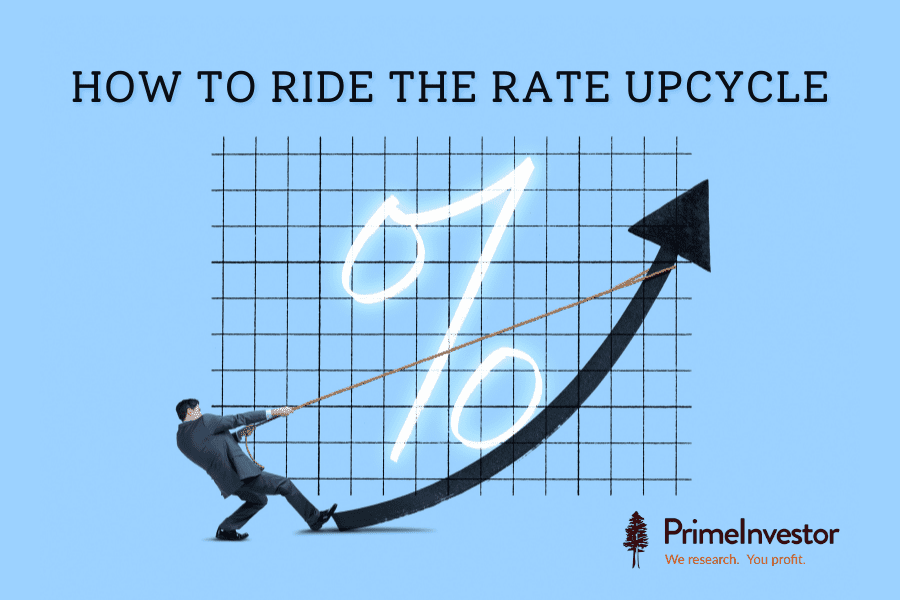Indian debt investors have been handed a raw deal in the last three years. Though inflation has been rising and market interest rates edging up, the Reserve Bank of India (RBI) and the Monetary Policy Committee (MPC) were doing their level-best to keep a lid on interest rates, to protect borrowers in a Covid-hit economy.
The latest monetary policy review on April 8th, however, offered the first signs that they do recognise the plight of savers and consumers. After effecting a back-door rate hike of 40 basis points, MPC and RBI have signaled they may kick off a rate hiking cycle in the coming months.

Back-door rate hike
The MPC didn’t change either the repo rate or the reverse repo rate and continued to talk of an ‘accommodative’ stance on April 8th. But when it comes to monetary policy, actions speak louder than words. Three RBI actions in this meeting signalled a shift to a rising rate policy.
- Usually, rate hike cycles begin with MPC announcing increases in the repo or reverse repo rate. But in this policy, though no changes were made to the repo or reverse repo rate, RBI announced a new Standing Deposit Facility (SDF) where banks can park their overnight liquidity, at an interest rate of 3.75%. This is considerably higher than the current reverse repo rate of 3.35%. With higher rates available on SDF, banks are expected to park more money in it, making the reverse repo window irrelevant over time. Markets are therefore interpreting this measure as a back-door 40 basis point hike in reverse repo rates. A hike in the repo rate is likely to follow in the coming policy reviews, starting as early as June.
- The newly introduced SDF, by offering better returns on banks’ idle money, is expected to quickly drain the banking system of its excess liquidity. RBI will continue with its liquidity vacuuming measures such as VRRR (Variable Rate Reverse Repo), to absorb the excess liquidity pumped into markets during Covid. When liquidity turns tighter in money markets, short term interest rates such as call rates and rates on Commercial Papers and Certificates of Deposits rise.
- The MPC has subtly said that it will now prioritise inflation targeting over growth. This signals a shift in policy stance from the easy and cheap-money policies of the last three years, to tighter and costlier-money policies. Brokers and research agencies now estimate that India’s repo rate, now at a record low, could be hiked by as much as 100 basis points over FY23, from the current 4% to 5.25%. The trajectory thereafter would depend on how growth and inflation play out.
Markets run ahead
In bonds, as in stocks, markets seldom wait for official announcements. Bond yields have already been drifting up in the last year with rising inflation making players wary of rate hikes. The main bond benchmark, the 10-year government security (g-sec), after seeing its yield fall to 5.8% in mid-2020 was trading at 7% just before the policy review. Post-policy it has moved up to 7.15%. G-sec yields for other tenures have risen too, with much of the increase coming in the last four months, as the table below shows.
Medium term g-secs of 3-5 year tenures had a lot of catching up to do and thus have shown a sharper spike than the 10-year security since January.
With yields on 10-year central g-secs already at 7.15%, we expect the next few weeks/months to throw up good opportunities for long-term debt investors to lock into very decent yields of 7.5-8% on the safest bonds in the market for 10 year, 15 year, 20 year and even longer terms. This situation will also present a good opportunity to make long term allocations to 10-year constant maturity debt funds and gilt funds for a buy and hold strategy. State governments lately have been borrowing at rates that are 60-70 basis points above Central g-sec rates. This will make SDLs (read this article to know what are state development loans) a good long-term investment too.
Opportunities to earn 7.5% plus for 10 years or more from sovereign bonds don’t come often. Therefore, in the coming weeks, we plan to keep a very close watch on upcoming auctions of g-secs and SDLs on the RBI Retail Direct platform to alert you to lucrative investing opportunities in sovereign bonds. These calls are available for our growth members only. Await our mails and also check our bonds section.
Meanwhile, if you don’t have an RBI RDG account read this earlier article on how to use this platform.
Corporate bonds yet to adjust
While there’s an upcoming opportunity to lock into higher yields in sovereign bonds, corporate bonds don’t yet make the cut. When yields on the safest securities in the market rise, riskier bonds need to follow suit. But yields on AAA-rated corporate bonds have been slow to catch up and have moved up at a much slower pace than g-secs. You can see that their yields have increased less than those of g-secs.
Corporate bond spreads reflect the extra return that investors demand for the higher risks in lending to companies versus the government. But spreads on AAA bonds are today at just 25-33 basis points, far lower than historical averages of 60-70 basis points. As excess liquidity in the market dries up and economic activity picks up, corporate bond spreads may go back to historical levels, which will mean a rise in AAA yields. Right now, therefore, it is not ideal to invest in 5 year plus AAA corporate or PSU bonds, as the extra return you’re getting for higher risks is not great.
Lower-rated bonds
When AAA bonds see their yields rise, those of lower rated companies are automatically expected to follow suit. And they have. You can see from the table below that the yields on AA and A issuers are now at respectable 7.6-9.7%.
But your decision to invest in lower-rated corporate bonds should not be based on the absolute returns, but on the spreads they offer over g-secs of a similar maturity. Spreads on lower rated issuers have shrunk in the past year and we think there’s room for them to widen. It appears wise to wait for these issuers to offer better compensation for risks.
Rate outlook
Apart from current spreads, your bond strategy should depend on the rate outlook too. So how much do we expect interest rates to move up from here?
There are opposing forces at work here. On one hand, there is the huge supply of g-secs and stubbornly sticky inflation that are working to keep rates high. The Central government has mammoth Rs 14.95 lakh crore borrowings planned for FY23, of which it plans to mop up Rs 8.45 lakh crore in the first half. This kind of supply of g-secs is bound to put upwards pressure on yields.
CPI inflation in recent months has stayed above RBI’s comfort level. WPI inflation has been in double digits for over a year now and will trickle down to CPI in the coming months. If this situation persists through FY23 RBI may extend its rate hikes beyond the expected 100 basis points.
On the other hand, the economy is also not firing on all cylinders, with RBI expecting GDP growth of 7.8% for FY23. The government and RBI may therefore not like borrowing rates to go up sharply, impeding the nascent recovery. This would argue for rate hikes to be kept in check. RBI (which manages government bond auctions) would also try its level-best to keep the government’s borrowing costs low by intervening in markets to mop up excess g-secs. These factors suggest that though g-secs topped out at 8.5-9% in previous rate upcycles, they could be contained at 7.5-8% this time around.
But there can be external risks that can force RBI’s hand on rate hikes. Rising rates in Western markets can lead to big FPI pull outs from domestic bond markets, causing the Rupee to depreciate sharply. This could force RBI and the Centre to keep domestic rates at high levels to stem outflows and ward off a balance of payments crisis. In this scenario, g-sec yields may not top out at 7.58% as expected and may head higher.
A barbell strategy
A good way for bond investors to handle the uncertainty about how far rates can go, is to use a barbell strategy. (Read what a barbell strategy is here). You can load up on long-term sovereign bonds and SDLs when yields get to the 7.5-8% levels and also own short duration debt funds, floating rate debt funds and floating rate bonds to position for the possibility of rates heading up and up. Here’s how we think investors can ride the rate upcycle.
- Divide your debt portfolio into two components based on your investment horizon. If you have debt money to allocate towards long-term (10 year plus) goals such as retirement, children’s education, or post-retirement income, then the coming weeks/months will offer opportunities to lock into 10-year plus g-secs and SDLs at attractive rates. But please note that government bonds have only interest pay out. You will need to pay tax and redeploy the interest elsewhere for your money to grow. Otherwise use these bonds for income options and options like constant maturity funds, when we alert you to these opportunities.
- For the above purpose, do keep funds handy in bank FDs that can be broken prematurely, to invest as RBI auctions come up. Long-tenure gilts and SDLs do have some disadvantages such as poor liquidity (before maturity) and taxability at your slab rates. Constant maturity gilt funds can be a way around these issues, especially if you can time your entry to high rates. Wait for us to alert you to these opportunities in the coming months.
- If you have limited funds to invest now, prioritise central and state government bonds over bonds of AAA corporates or PSUs, as they offer far better reward for lower risk. The case for investing in riskier debt options like NCDs, covered bonds, MLDs etc is very weak, given the opportunities in sovereign bonds.
- Long-term sovereign bond investments will cap your returns at a fixed rate. If market interest rates move beyond this, you can suffer mark-to-market losses (before maturity) on the bond price and also an opportunity loss on rates. To hedge against this possibility, balance out your g-sec/SDL investments with equal investments in floating rate bonds, well-managed floating rate debt funds and short duration debt (you can check Prime Funds for this). Such funds can help you participate in a prolonged rate upcycle in a tax-efficient manner, while enjoying anytime liquidity.
Please note that debt fund taxation has undergone a change. Indexation benefit will not be available for investments made from April 1, 2023 onwards. You can read about this in our article, ‘Tax changes in mutual funds: How to manage your investments now‘.
We have released a Prime Q&A video (attached below) where we discuss rising interest rates and how to make the most out of them. Here, we answer the following questions :
Q1 - Are interest rates rising?
Q2 - Where can I invest to get the best rate now?
Q3 - What will happen to post office schemes and RBI bonds?
Q4 - How far can interest rates rise?
The questions are time stamped in the video so you can directly skip to the question of your choice.








14 thoughts on “How to ride the interest rate upcycle”
The Central government has mammoth Rs 14.95 lakh crore borrowings planned for FY23, of which it plans to mop up Rs 8.45 lakh crore in the first half. This kind of supply of g-secs is bound to put upwards pressure on yields.
kindly clarify the effect of government borrowing on G-sec prices and yields
High govt borrowings increase gsec supplies without matching demand. They therefore push up yields. But as long as govt announces borrowings at beginning of fiscal and sticks to it it gets factored in quickly.
The Central government has mammoth Rs 14.95 lakh crore borrowings planned for FY23, of which it plans to mop up Rs 8.45 lakh crore in the first half. This kind of supply of g-secs is bound to put upwards pressure on yields.
Kindly clarify above ,what will be its effect on bond yields and prices?
Thanks for a lucid article
Although RBI site says zero charges Vs Zerodha of 0.06%.
Wanted to know the difference it can make on other fixed charges like STT/Ex tran chrg/SEBI/stamp duty/Gst ,as its easier to monitor a portfolio on a single platform.
There will be no changes in taxes between RBI and other brokerage platforms.
Excellent article, Thanks for the crisp and insighful analysis! indeed Debt fund yields (AAA corp bond funds) have been lagging behind on rise in YTMs compared to Gsecs..hopefully they will adjust sooner than later!
Yes they should. Thank you!
Well articulated. Thanks. Have HDFC corporate bond in portfolio Is it safe to hold for >. 5 years in increasing interest rate scenerio?
Yes if your horizon is 5 years plus you can hold.
So as i understand Aditya Birla SL floating rate bond and HDFC floating rate bonds (both from Prime funds) will be a good option at this moment since interest rate cycle may turn upwards from upcoming cycle, right ?
And when the interest rate cycle reaches the other end i.e. they are about to move downwards then the mentioned funds can be gracefully redeemed, right ?
Please suggest
Yes, apart from floating rate funds ultra short and short duration funds will also do the job by reinvesting at higher rates once current bonds mature.
The Q by Dheeraj is probably misunderstood. He is asking if one should redeem floater investment when interest rate starts decreasing again.
Yes one should.
Yes that’s right..floating rate funds perform best when we are in a rising rate cycle
Comments are closed.